As a budget airline hub, Stuttgart in southern Germany is easy to get to. Don’t just limit yourself to the town itself though – there are some incredible things to see you can manage in some easy day trips from Stuttgart. The best way to do this is with a Baden-Württemberg ticket from Deutsche Bahn:
Baden-Württemberg-Ticket
You get an all-day ticket to travel on all trains and most buses, and your own kids under 15 go free (up to 5 people in one group). Castles, palaces, gardens, half-timbered houses, and monasteries, it’s all super close to Stuttgart.
This post contains affiliate links. Should you click on one, I will get a small commission at no extra cost to you. Thank you for supporting my work!
Burg Hohenzollern
You’ve probably seen photos of this castle on Instagram, and for good reason. The Hohenzollern Castle is incredibly beautiful, perched on a hilltop with green fields spreading out below it. This is the ancestral seat of the Hohenzollern family, who still own and operate this castle. For castle enthusiasts, this is a relatively new one, constructed in the 1800s, but it’s gorgeous and not too busy. In spring and summer, you can get lunch from an outdoor cafe right in the castle courtyard. From Stuttgart, it’s about one hour by train, with a short local bus ride to the castle parking lot. If you are traveling on a Baden-Württemberg ticket, you get a discount on your castle entrance fee so be sure to present it.
Ludwigsburg Palace
Just north of Stuttgart is the impressive baroque splendour of the Residenzschloss Ludwigsburg and its surrounding gardens. Built during the 1700s, the palace and gardens were built in the French style, and served as the home of the Duke Württemberg. It’s the largest in Germany, and has survived intact through several wars. You can tour the interior rooms, and a highlight is the Baroque theatre the Duke had built in 1758 – in fact the oldest surviving castle theatre in Europe with its original stage machinery. As with most German castles and palaces, you can only see the interior rooms on a guided tour – just check with the staff when you buy your ticket when the next English language tour is leaving. If you don’t feel like a full guided tour, just wandering the gardens is incredibly impressive as well. From Stuttgart main station, Ludwigsburg is a quick 15-minute ride on the S-bahn, and a short walk from the Ludwigsburg station.
Schwäbisch Hall and Kloster Großcomburg
If you’re not in the mood for castles and palaces, try the half-timbered town of Schwäbisch Hall instead. Tucked into a valley around the river Kocher, this town has a surprisingly good museum, several good quality art galleries and endless picturesque corners to explore. I particularly love the covered bridges across the river. Keep an eye out for local festivals like the spring cheese festival, and the Christmas markets. Hop on a bus or take a short hike up to the monastery complex above the town, surrounded by 17th-century walls. This is a quiet spot to experience local history without busloads of tour groups piling up behind you. To get there from Stuttgart, it’s a one-hour train journey and a 20-minute bus ride.
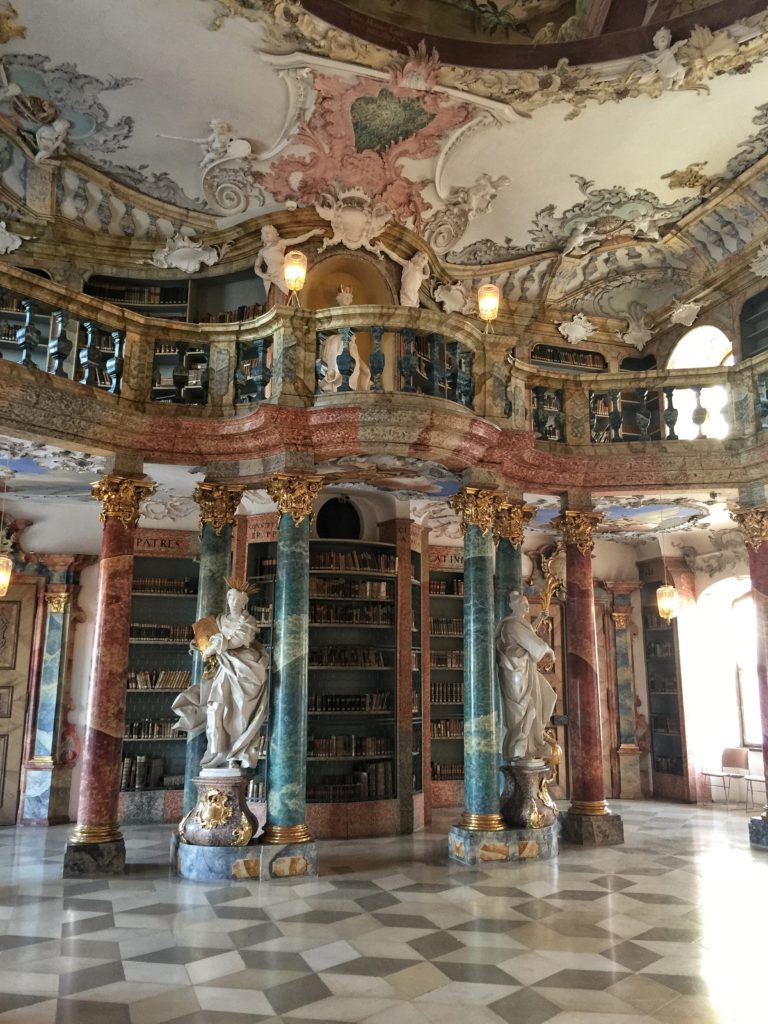
Ulm
This beautiful town makes for a great day trip. The Ulm Minster is one of the tallest churches in the world, and you can climb the tower if you’re feeling energetic. We particularly enjoyed the old town with its crooked half-timbered houses and pretty streets, and the Bread Culture Museum which has a terrific audio tour in English for both adults and kids. If you’re as keen on history as we are, you will want to make time to see the Lion-man at the Ulm Museum, a prehistoric mammoth ivory carving of a human figure with a lion head. It’s the oldest animal-shaped carving ever found, carved around 40,000 years old. A little way from the centre of town is the incredible Wiblingen Abbey library, which regularly features on those ‘Most Beautiful Libraries’ lists on the internet. Here’s my full post on a day in Ulm, but it was before I knew the Lion-man was there! I have to go back. You can catch a direct train from Stuttgart to Ulm, and it’s about an hour.
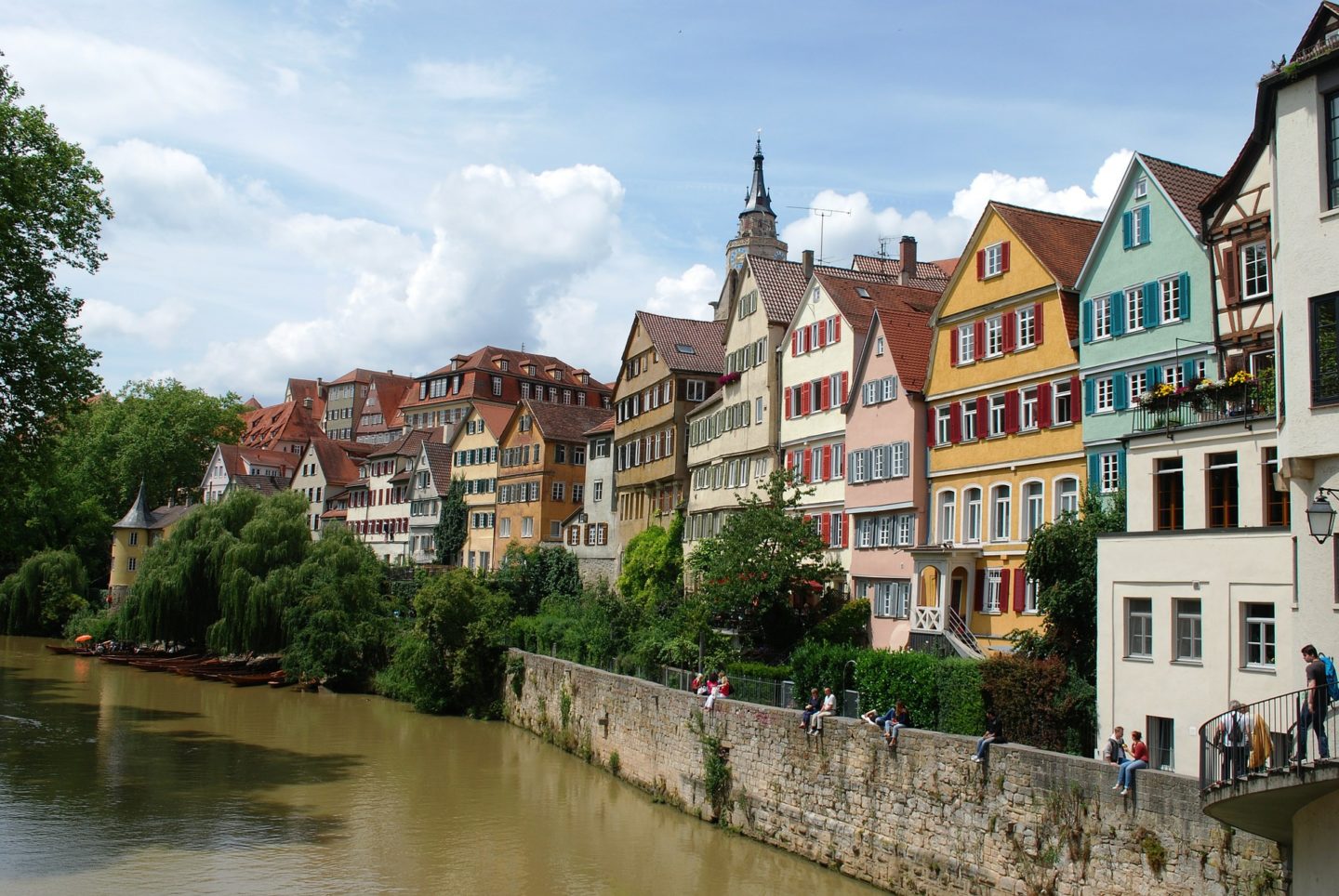
Tübingen
This adorable university town combines fairy tale half-timbered houses with picturesque old town, Cambridge-style punts, and a few museums. You can take a punt (small boat you push with a pole) onto the river, but check the availability as boats fill up fast. There are a few beautiful parks, and if you are visiting on a Sunday, you can visit the Gomaringen Castle and see their displays of everyday Tübingen life in the 19th and 18th centuries. Just wandering around and taking in the old town is one of the best activities here, and as it’s only an hour train ride from Stuttgart, it won’t be a taxing day trip.
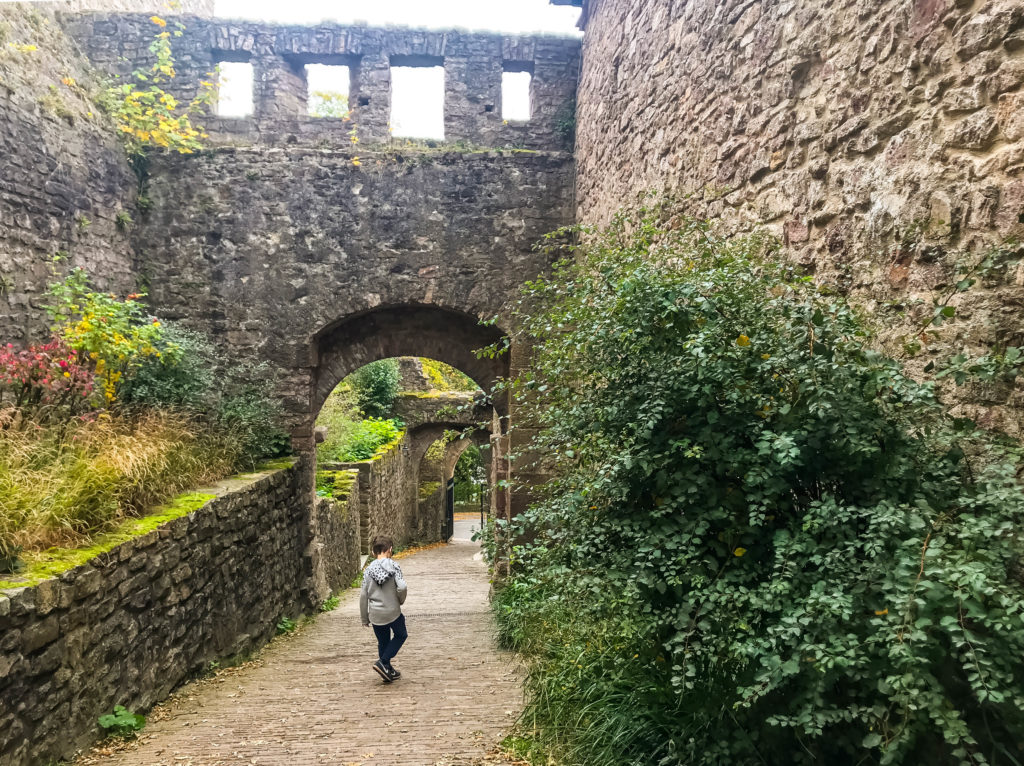
Baden-Baden
This historic spa town on the edge of the Black Forest has been a favourite place to relax and rejuvenate since Roman times. There are many natural springs in the area, piped in to different spa complexes including the fancy Caracalla Spa. Johannes Brahms also liked to spend his summers here, and his house is now a museum. There are some excellent galleries here including Museum Frieder Burda for modern art, the Fabergé Museum, and the Kunstmuseum Gehrke-Remund where you can see many of Frida Kahlo’s works. Baden-Baden is very close to the French border, and has always attracted French people wanting to gamble, and it was quite the party town during the 19th century. Dostoevsky even wrote The Gambler while gambling in the casinos there. Just above the town is the Hohenbaden Castle, which has been in ruins since the 16th century, but there are still towers to climbs, and upper floors to visit, so it’s great fun if you’re a fan of castles. It’s free, and kids will love having free reign to run around (there are railings, but definitely keep them within arms reach on the upper floors).
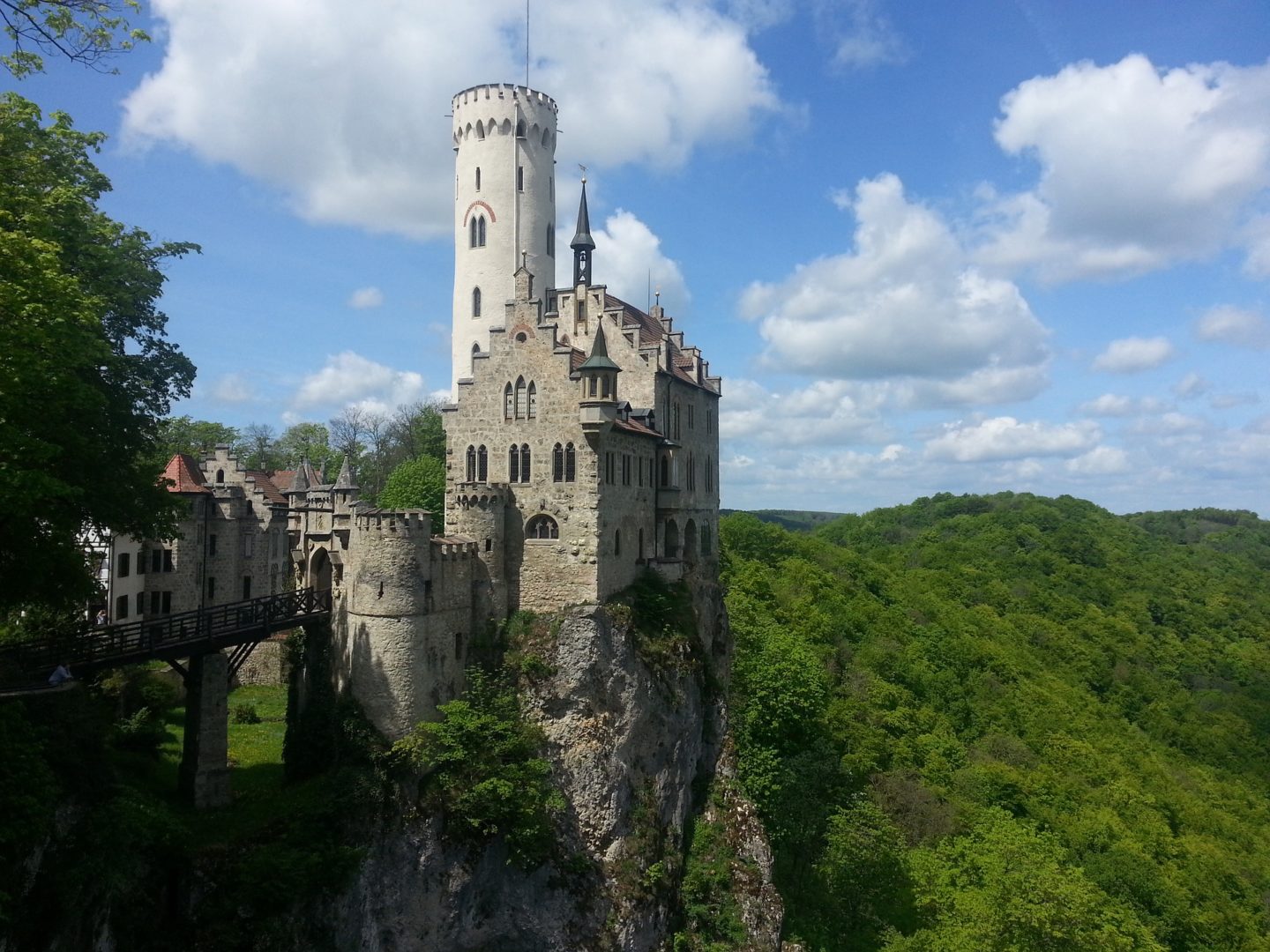
Schloss Lichtenstein
A gorgeous little jewel of a castle, Schloss Lichtenstein is one of those 19th-century castle recreations that were so popular with the German aristocracy in that period. The castle standing there now was completed in 1842 by the Duke Wilhelm von Urach, cousin of King Wilhelm. It’s modernity shouldn’t dissuade you from visiting it, however, as it’s dramatic placement on a stone cliff jutting out into the landscape is so impressive. There are many tours in English and the surrounding area is beautifully epic with forests topping sheer cliffs and little villages tucked into tight valleys. Getting there from Stuttgart is a little bit of an adventure, requiring train to Reutlingen, a bus to Honau, and about a half-hour walk, but the castle and grounds are not big so consider it part of the adventure. Read my full post on visiting Schloss Lichtenstein here.
You can organize and buy your train tickets right here, in English.
PS – Need help with packing for Germany? I’ve got you covered for packing for your Germany trip in spring or summer.
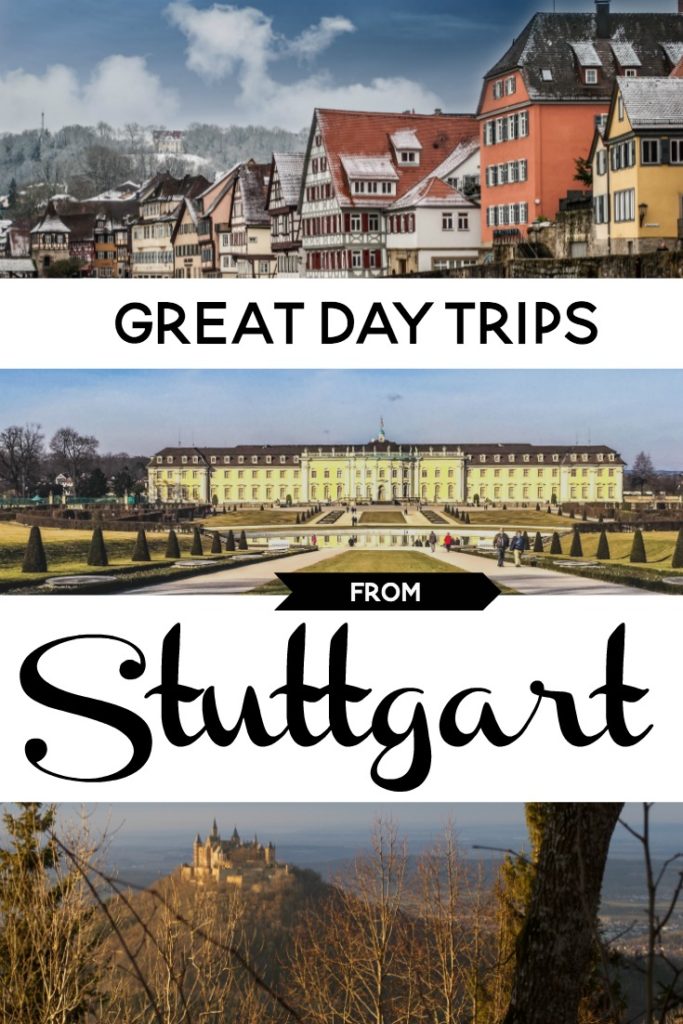
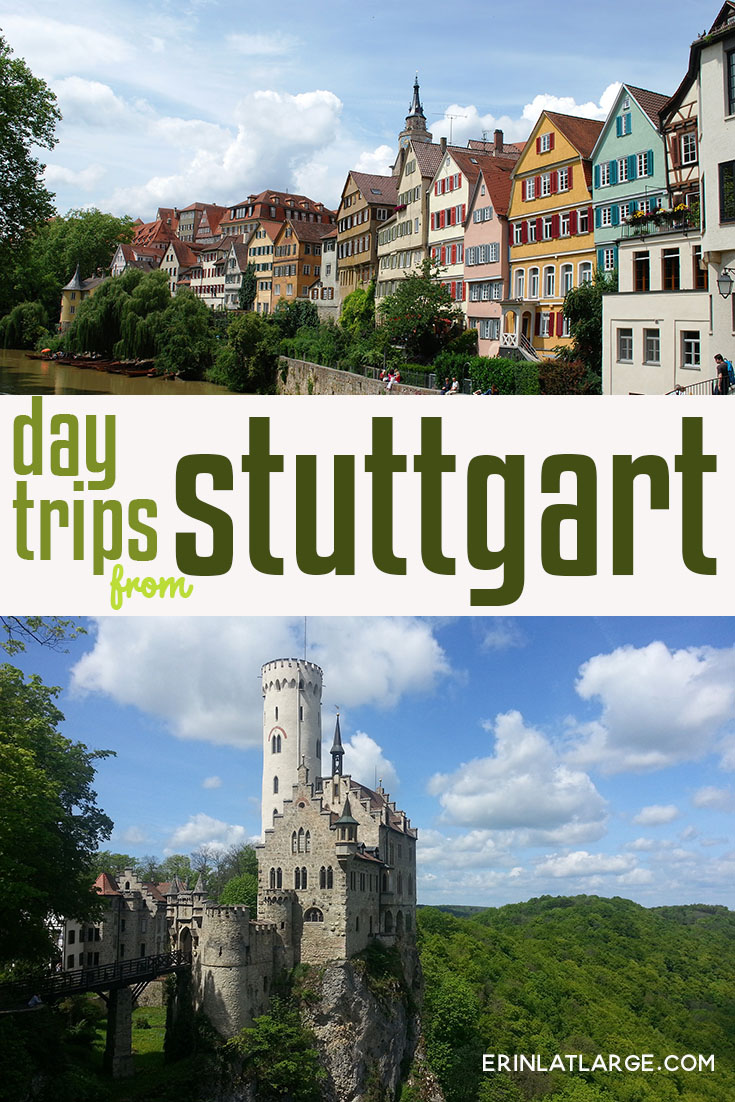
PS – Flying into Frankfurt instead? I have you covered: Great Day Trips from Frankfurt


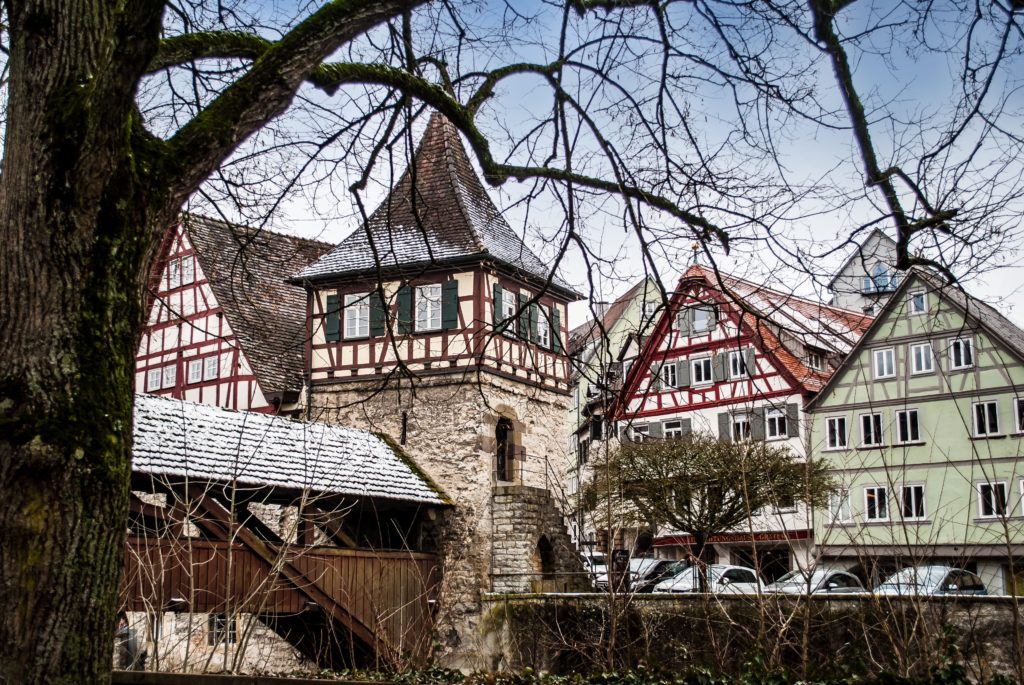
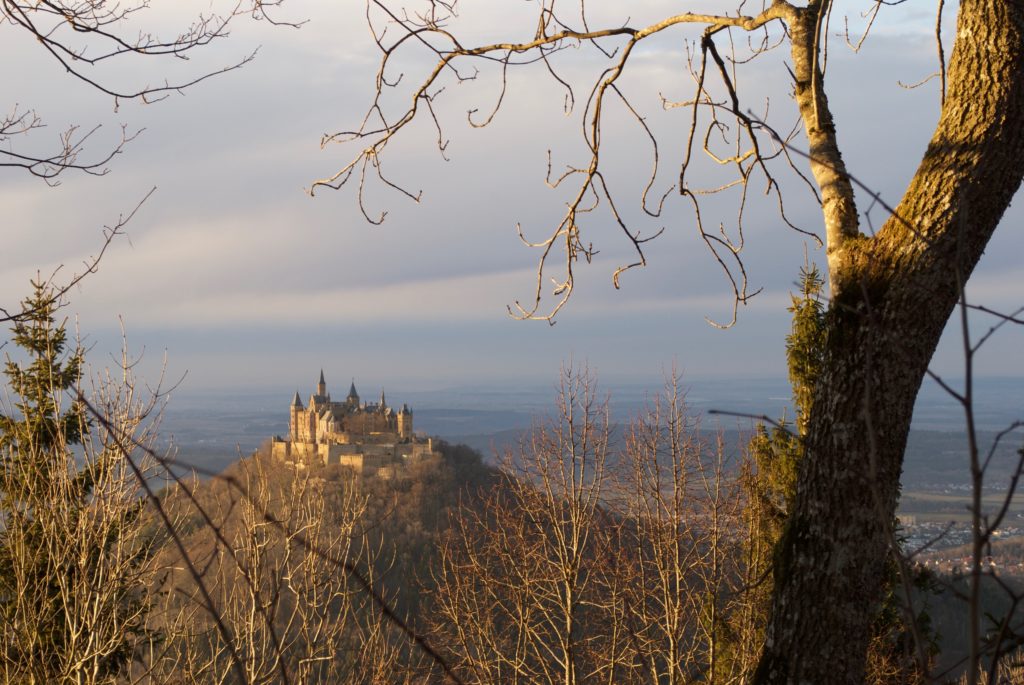
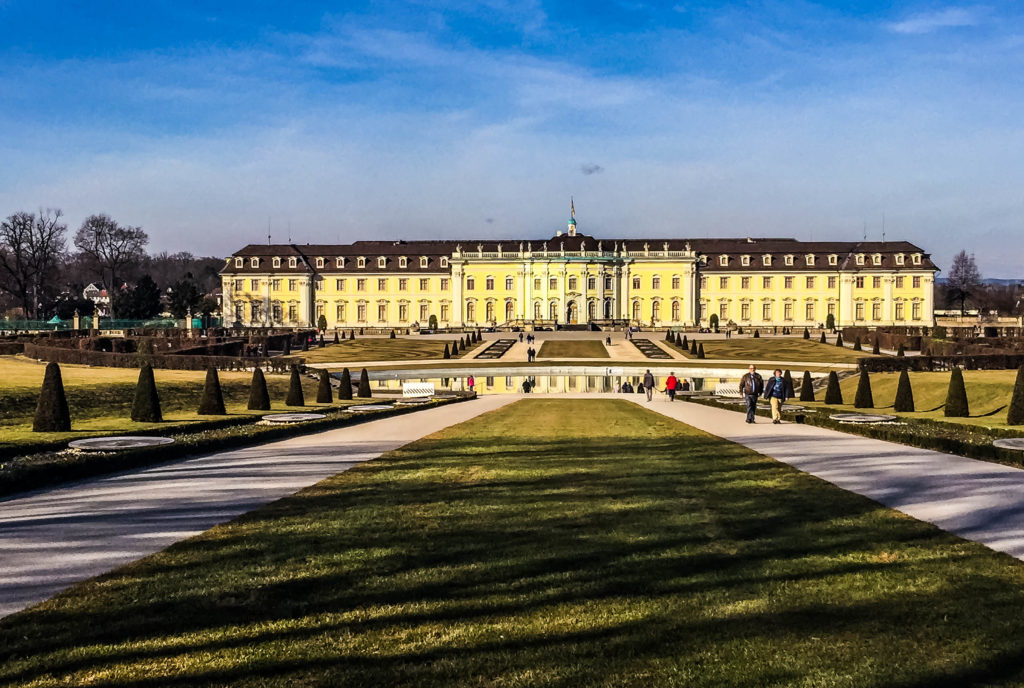
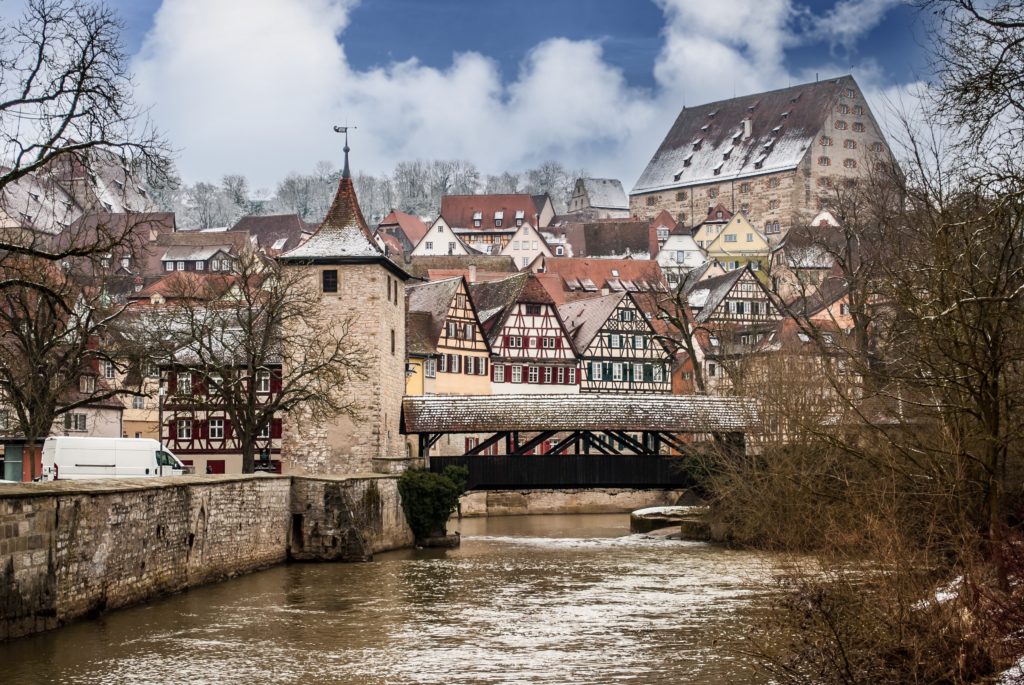
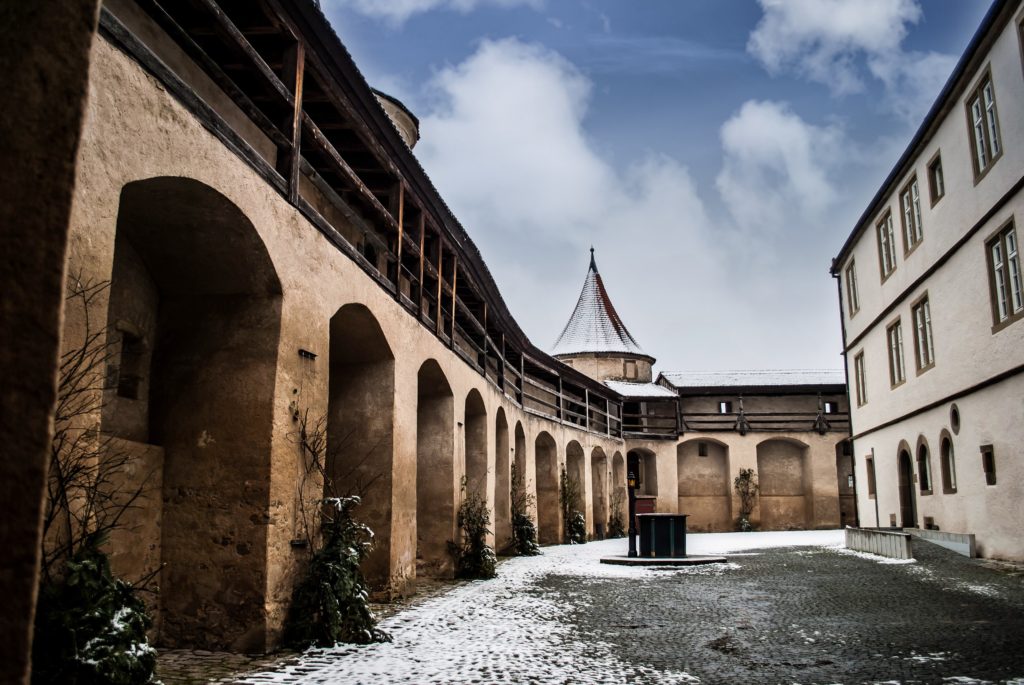
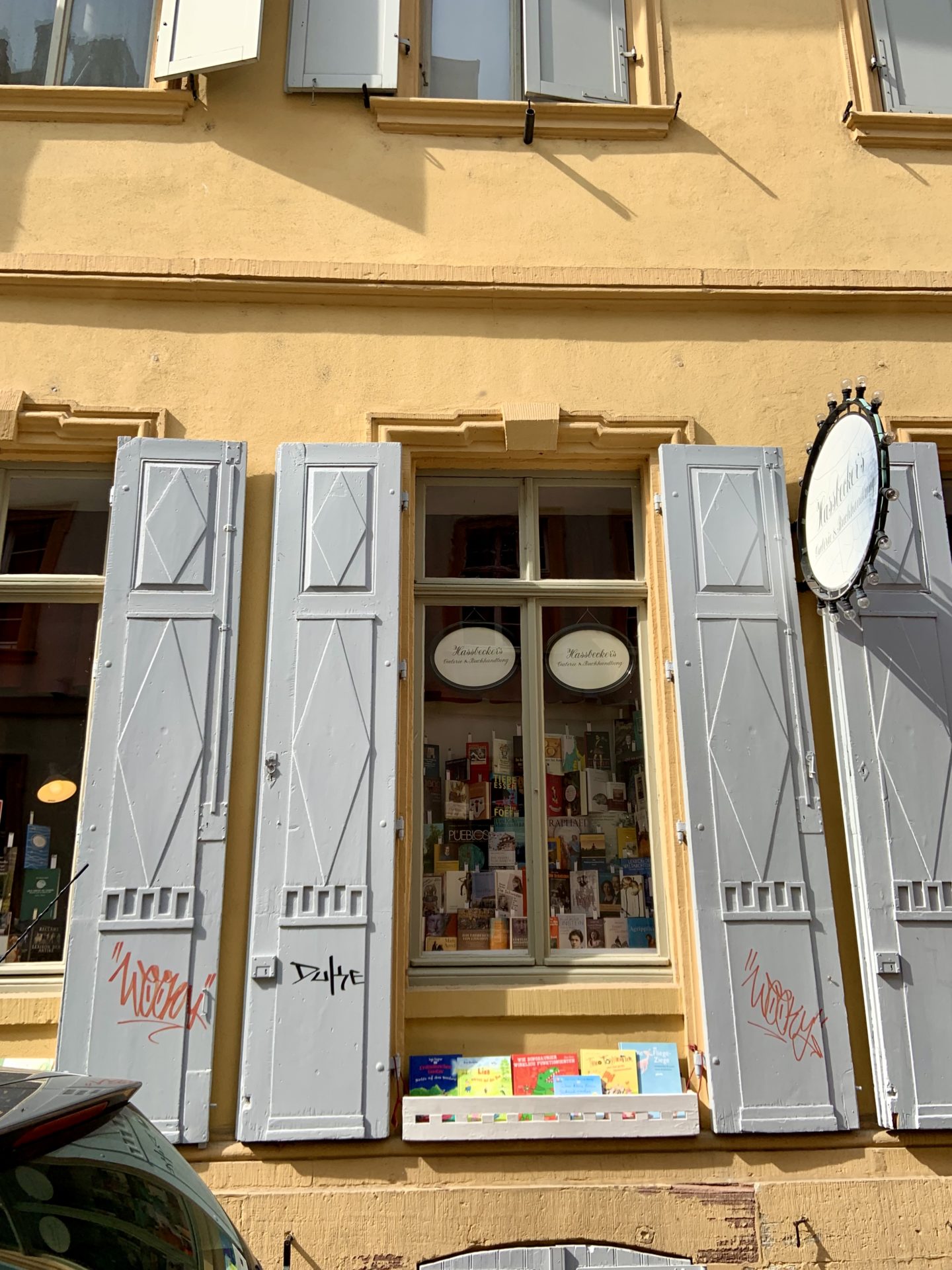

Schwäbisch looks so charming! I love visitting lesser known towns and this is up my alley! I didn’t know Stuttgart was a budget airline hub, I guess this makes it uber easy to visit next time.
Easyjet, Ryanair, Flybe, Eurowings and a few others do for sure.
Great post! I love that you provided alternive sites of interest to castles. We love castles, but living in Europe and seeing them all the time can leave us feeling castled out 😂.
I’m a castle fanatic, but I hear people like other things too! 😉
Wish I had known all this before I went! Schwäbisch Hall looks amazing – definitely somewhere to keep in mind next time I’m in that area. Fab post!
Thanks! Yes, Schwäbisch Hall is lovely, I’m hoping to get there for their cheese festival in May.
It looks like from a fairy tale! Castles are great for photos and “getting back in time” hehe. 🙂
A day of exploring castles and gardens sounds just about perfect. It must be never-ending discovery heaven for you. Thanks for linking up with #farawayfiles
Oh my goodness I’ve never known that I must see Schwäbisch Hall! How cute is that town? And did you say cheese? Sold! Love all the options so close to Stuttgart. Thank you for sharing with #FarawayFiles
We would love to tour more of Germany, we toured a lot of the north – east last year, but would love to venture more south and west.